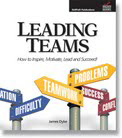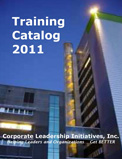- The first question is the most important and fundamental: WHAT’S MY JOB?
- The second question follows the first: HOW WELL AM I DOING IT?
- The third question is more profound: WHAT AM I PART OF?
The fourth question is about VISION: Where are we going?
Allow me to build a context here…
In recent years, researchers in the human resource industry have been focusing their attention on what they are calling “employee engagement” and its vital role in determining worker productivity and longevity in a job.
The Gallup organization, in particular, has devoted a great deal of time and resource in studying employee engagement. They have come to the conclusion that it is strongly connected to something all workers desire: a meaningful purpose to their work.
Here’s what the Gallup organization has learned about the connection between employee engagement and clear purpose:
“One of the most common mistakes companies make is to approach engagement as a sporadic exercise in making their employees feel happy… But it’s not that simple. People want purpose and meaning from their work. They want to be known for what they’re good at. …
“Employees need more than a fleeting warm-fuzzy feeling and a good paycheck… to invest in their work and achieve more for your company. People want purpose and meaning from their work. They want to be known for what makes them unique. This is what drives employee engagement.”
An employee’s sense of meaningful purpose is ultimately dependent on the organization’s purpose. In effect, is the purpose of the organization something that the employee considers meaningful???
Here’s the reality: The individual employee really doesn’t have any influence in determining organizational purpose—that’s in the hands of the executives and the governing board.
The only choice the employee has is whether they are willing to embrace it as a requirement for meaningful employment! If not, then they shouldn’t take the job in the first place.
Up Close and Personal
I have had the privilege of working with a number of offices and employees in the Social Security Administration. One of the things that has impressed me is the overwhelming majority of employees who joined the administration because they felt the work they did there was of particular value and meaning in addressing the needs of their fellow Americans—through substantive, material assistance. They chose to work there because they felt they could make a meaningful difference in people’s lives because of the mission and pursuits of the organization.
Here’s the point: To attract and engage employees via a sense of meaningful purpose, the organization, itself, must have a clear purpose that employees consider meaningful.
But that’s not enough! That purpose must be translated into a clear direction at the team and employee level.
The Importance of a Clear Team Vision Statement
A ground-breaking study of successful and unsuccessful teams that was conducted by Harvard University found that a CLEAR TEAM VISION STATEMENT is a watershed-predictor of team success: have one, and your team will succeed; lack one, and your team will fail.
Here are the basics you need to know in order to craft an effective team vision statement:
- It needs to support the vision of the organization.
- It must be crafted by you and your team working together.
- It should include the following information:
- What we do as a team…
- Who we do it for…
- How well we intend to do it…
- The measurable results we will achieve…
Grab a copy of my book for lots of examples of team vision statements (some of which you may even be able to use with very little editing!) You can find it on Amazon here: Leading Teams: How to Inspire, Motivate, Lead, and Succeed!: James Dyke: 9781934589007: Amazon.com: Books
The important thing to remember about your vision statement is that you must make it central to everything you do as a team and a team leader. That means you must talk about it; refer to it; and use it as a touchstone whenever you tackle the important work of a team:
When you are PLANNING, you ask the question: What are the things we need to accomplish together that will get us closer to achieving our vision?
When you are EVALUATING the work you have done as a team or as team members, you ask the question: What could we have done differently to achieve our vision easier /better /faster /cheaper /safer?
When you are solving a PROBLEM, you ask the question: What solution will get us closer to achieving our vision?
When you are crafting an important DECISION, you ask the question: What decision will best support the achievement of our vision?
I also encourage team leaders to put their Team Vision in the center of one-on-one conversations they have with team members who are not performing well. That sends the strong message that the team’s focus on effective performance is not a matter of “pleasing the boss,” but of “achieving our vision…our meaningful purpose.”
Up Close and Personal
In one of my training seminars I met a supervisor who understood the power of clear vision. He worked for a large health services organization and was put in charge of their transportation team. They were responsible for transporting patients, medicines, and medical supplies within the multi-location organization. And they had a terrible record of turnover, absenteeism, tardiness, and complaints from patients and medical staff! Under the leadership of this gifted supervisor, they ultimately became the top-rated team in the organization, in all categories of performance and customer service!
I asked him how he did it. His answer was simple. He told me, “I kept emphasizing our team purpose and vision…over and over and over. I kept telling my team members, “It’s all about the patients; it’s all about the patients; it’s all about the patients.”
He also constantly personalized the team vision whenever he challenged poor performance. When one of his team members was a half hour late returning from his lunch break, he chided him with the follow admonition:
“Victor, if your grandmother needed to get to her doctor’s appointment, would you tell her, “Sorry grandma, you’re just going to have to wait…I’m not done with my lunch yet.”?? Then he told his team member, “Well, that patient who needed to get to her appointment was somebody’s grandma!!! So… are we going to let that kind of thing happen to somebody’s grandma????”
The team responded to his inspirational leadership by embracing the meaningfulness of the work they did. As a result, they gradually developed a greater sense of pride and accountability for their assignments and their performance. Under his leadership, they ultimately became the top-performing team company-wide, with the highest ratings in performance, attendance, and customer service.
If you need help molding your people into cohesive, collaborative teams… give us a call – we can help! We offer helpful resources, training, and coaching that can get a drifting or conflicting team back on track—working and performing together.
And be sure to stay tuned for the next post, to learn the all-important fifth question!
Until next time… Yours for better leaders and better organizations,
Dr. Jim Dyke – “The Boss Doctor” ™ helping you to BE a better boss and to HAVE a better boss!






